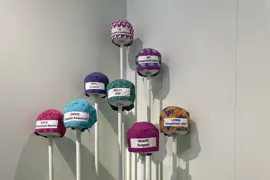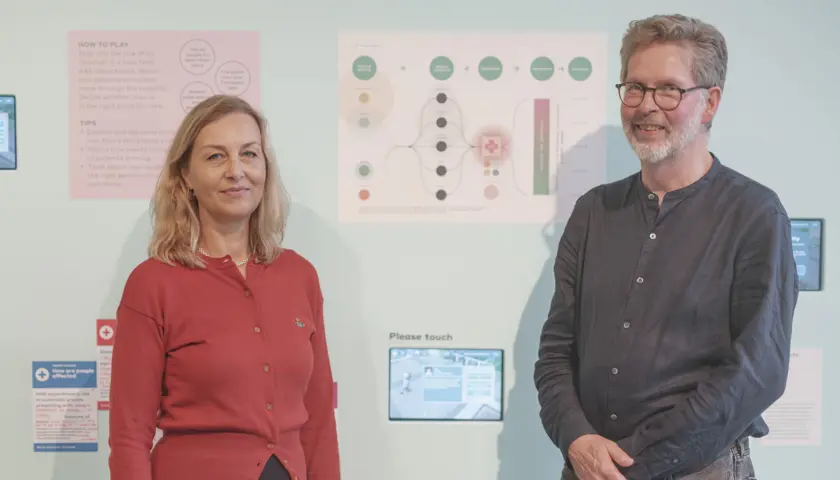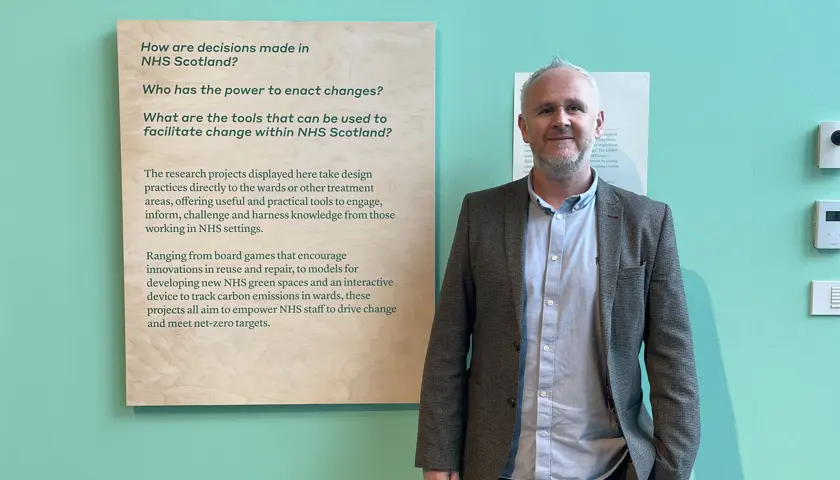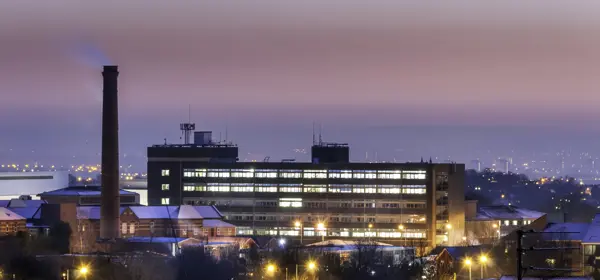New tech and old yarns
New tech and old yarns
Designers and medics are looking to the past and the future to find ways of making healthcare more sustainable. Jennifer Trueland reports
Dundee has a pedigree in creating and developing compelling video games with popular titles including Grand Theft Auto, Lemmings and Minecraft.
However, the latest to be showcased at the city’s design museum, V&A Dundee, has an altogether more serious purpose: to find ways of improving and streamlining the way patients interact with emergency departments and the wider health system – and help the environment as well.
Flow is a digital tool that uses real-life data from Dundee’s Ninewells Hospital to explore different scenarios and encourage users to identify how to make better choices at each stage of the patient journey, whether that’s the decision to come to an emergency department in the first place and what should happen if and when they get there.
Rod Mountain, a recently retired ENT surgeon, has been working with gamers from the city’s Abertay University to create Flow.
‘There’s a challenge of how can we use the knowledge from a gaming background in what are now called serious games,’ he explains. ‘It’s using gaming technologies but applying them to real-world situations. This was something that was completely foreign to me, so I’ve been on a steep learning curve.’
Flow attempts to simulate decision-making in healthcare in a fun way. Players can click on a patient and get a quick summary of their problem – for example, toothache, or the symptoms of a heart attack – then decide the appropriate place for them to be treated.
‘Hopefully what we’re going to achieve in the longer term is how we, as members of the public, make good decisions when something goes wrong,’ says Mr Mountain. ‘If we’ve got chest pain, or are feeling short of breath, or we’ve twisted our ankle, we all as human beings make a decision – we either do nothing about it and ignore it, or we might phone our GP, or we might just take ourselves straight to an accident and emergency department. On most occasions, I think members of the public get these decisions right, and there’s not waste in the system – in the sense of an unnecessary journey or calling out an ambulance. But sometimes there is waste and this is what we are encouraging people to think about.’
Mr Mountain says the situation where a patient has toothache is an example of where the game might benefit patients and the healthcare system as well as the environment. ‘Hopefully using a game might just help people to make better decisions if they’ve got a dental problem, because an awful lot of people just take themselves to [the emergency department] and then they are turned away, and are disappointed – so the whole thing gets messy. So having a game where you make a decision and can see whether you’ve made the right or wrong decision, you learn from it.’
The aim, says Mr Mountain, who also lectures at Dundee University’s medical school, and who is a former associate postgraduate dean, is to develop the game so that it can be used from the perspective of healthcare workers, including doctors, to improve their decision-making too. ‘I think it’s going to be a fantastic resource for doctors, nurses, allied health professionals – particularly trainees – so they can go into the game and make decisions and see the consequences.’
It's using gaming technologies but applying them to real-world situations
Rod Mountain
Mr Mountain lectures in ‘realistic medicine’, which has the goal for patients and families to be empowered to have open discussions about their treatment, including potential side effects. Key components include shared decision-making, personalised care, reducing harm and waste and encouraging innovation.
A prototype of the game forms part of HOPE to HEALTH: ideas for greener healthcare, which opened at V&A Dundee this month November. The exhibition features innovations intended to reduce the environmental effects of the healthcare system – with the overall aim of helping NHS Scotland to become a net-zero organisation by 2040. Other exhibits include reusable theatre caps, co-designed at NHS Golden Jubilee Hospital in Clydebank, as well as sustainable scrubs, possibly even using locally grown flax.
The free exhibition features the work of Design HOPES (Healthy Organisations in a Place-based Ecosystem, Scotland) which is a collaboration between the universities of Strathclyde, Dundee, Heriot-Watt, Abertay and Edinburgh. It is part of the Design Museum’s national research programme for green transition, Future Observatory. While this exhibition largely features ‘works in progress’, Design HOPES has just received £3.125m from the Arts and Humanities Research Council to build on research already undertaken in phase one and shows real-world effects.
The NHS is a big consumer of resources, explains Fraser Bruce, theme lead with Design HOPES and a senior design academic at the University of Dundee, and it’s an important part of Scotland’s eco-system. The overall project hopes not just to shine a light on areas where there is waste but also point the way forward to a more sustainable future.
He has been involved in the Green Ward Toolkit, also showcased in the V&A Dundee exhibition. As well as a web browser and case study cards, this includes a CO₂e monitor designed to be installed in a hospital ward of the future to show staff and patients how well each ward is performing in improving sustainability. There’s huge potential, says Mr Bruce, whose past roles include working as a mechanical design engineer with keyhole surgery pioneer Sir Alfred Cuschieri. For example, the monitor will show the effect of food waste and simple things such as the transition to using LED lightbulbs, hopefully engaging everyone in the move towards greater sustainability.
Adele Piper, business development manager at Duncan of Jordanstone College of Art & Design (part of Dundee University), who has a strong background in working with the health sector on innovation and start-ups, says the NHS has huge potential to make a real contribution to climate change goals.
She points to the theatre caps, which are now being trialled in 10 of Scotland’s NHS boards, as an example where a small switch can make a huge difference. The caps are made with reusable plant-based textiles, which are biodegradable – in comparison to current theatre caps, which can take up to 300 years to disappear. Current trials show that a four-pack of reusable theatre caps has the potential to remove more than 2000 single-use plastic caps from NHS waste.
The exhibition also features the work of Medi-Flax, which is assessing whether linen made from locally produced flax could provide textiles suitable for healthcare clothing. This involves using locally grown flax – some of it grown in hospital grounds – to create comfortable and eco-friendly uniforms.
As for Flow, Mr Mountain is hopeful it will make a difference, using a non-punitive approach to make the NHS more sustainable. ‘I firmly believe that if we’re going to change people’s behaviours, we need to have a way that is fun, that you can actually come in and not be scared to enter. Have a go, get things wrong and right in a safe space. A game is a slightly playful way of doing that. I’m more attracted to that model rather than a dictatorial approach that says “you’ve got that wrong, don’t do it again” because that’s an approach that doesn’t work.
‘Yes, it’s in the early stages, and decision-making in healthcare is complex and nuanced. But I think in two years’ time we’re going to have something fantastic to show people and share, free and available for anyone to use.
‘The potential for serious games being a useful tool in healthcare is an interesting conversation and it’s just opening up.’
From HOPE to HEALTH; ideas for greener healthcare is free to visit at V&A Dundee’s Michelin Design Gallery until 8 February 2026





